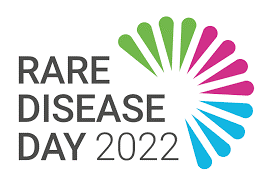Written by Harry Atkins, Assistant Project Manager
Today is Rare Disease Day, a day to raise awareness for people across the world living with a rare disease, their families, and those who care for them. Around 300 million people worldwide have been diagnosed with a rare disease, equating to approximately 26% of the global population (1,2). When you take into account their families and carers, it becomes apparent how many people are impacted by rare diseases.
For a disease to be considered rare it must have a prevalence of less than 1 in 2,000 people, and in England there are between 5,000 and 8,000 known rare diseases (3). In 2013, the UK government launched the UK Strategy for Rare Disease, which outlined 51 commitments with the overarching goal of improving patients’ quality of care in the NHS, from diagnosis through to treatment (4,5).
Since the launch of the strategy in 2013 there have been substantial advances in technologies for treating rare diseases (6). With more therapies being developed in the rare disease setting, it is increasingly important to demonstrate their clinical- and cost-effectiveness. In 2022, the National Institute for Health and Care Excellence (NICE) is set to launch the Innovative Medicines Fund (IMF) to fast-track patient access for cutting-edge technologies that currently have a degree of uncertainty around their clinical- and cost-effectiveness, which will bridge the gap between evidence generation and patient access (7).
NICE’s recent methods update described changes to the eligibility criteria for technologies being routed down the highly specialised technologies (HST) appraisal process (8,9). In the past, NICE has faced appeals from developers following decisions not to route their technology down the HST programme, one of which led to an appeal in court (9). Since the latest methods update, NICE has refined the HST eligibility criteria, and a technology will follow the HST pathway if it meets the following four criteria (10):
- The disease is very rare – defined as 1:50,000 population in England.
- Normally no more than 300 people in England are eligible for the technology in its licensed indication and no more than 500 across all of its indications.
- The very rare disease for which the technology is indicated significantly shortens life or severely impairs quality of life.
- There are no other satisfactory treatment options, or the technology is likely to offer significant additional benefit over existing treatment options.
Clearly-defined criteria may help standardise the interpretation of HST eligibility, discrepancies in which have previously led to appeals and ultimately delays in patient access. Nevertheless, NICE can still use their discretion should a technology not meet all of the four criteria; how they will do this is yet to be seen.
To find out more about Source’s approach to health technology evaluations in the UK and our experience in working on HST submissions to NICE, please don’t hesitate to get in touch.
To learn more about the HST process, please click here.
- Rare Disease Day. Available at: https://www.rarediseaseday.org/ (last accessed Feb 2022)
- United Nations Population Fund. World population dashboard. Available at: https://www.unfpa.org/data/world-population-dashboard (last accessed Feb 2022)
- Genomics England. Rare disease genomics. Available at: https://www.genomicsengland.co.uk/genomic-medicine/understanding-genomics/rare-disease-genomics#:~:text=There%20are%20between%205%2C000%20and,up%20to%20about%2030%2C000%20people (last accessed Feb 2022)
- Department of Health. 2013. The UK Strategy for Rare Diseases. Available at: https://assets.publishing.service.gov.uk/government/uploads/system/uploads/attachment_data/file/260562/UK_Strategy_for_Rare_Diseases.pdf (last accessed Feb 2022)
- Rare Disease UK. UK Strategy for Rare Diseases. https://www.raredisease.org.uk/uk-strategy-for-rare-diseases-2/ (last accessed Feb 2022)
- Department of Health and Social Care. 2020 update to the Implementation Plan for England. Available at: https://assets.publishing.service.gov.uk/government/uploads/system/uploads/attachment_data/file/867940/dhsc-2020-update-to-the-rare-diseases-implementation-plan-for-england.pdf (last accessed Feb 2022)
- NHS England. NHS England announces new Innovative Medicines Fund to fast-track promising new drugs. Available at: https://www.england.nhs.uk/2021/07/nhs-england-announces-new-innovative-medicines-fund-to-fast-track-promising-new-drugs/ (last accessed Feb 2022)
- Review of methods, processes and topic selection for health technology evaluation programmes: conclusions and final update. Available at: https://www.nice.org.uk/Media/Default/Get-involved/Meetings-In-Public/Public-board-meetings/nov-22-pbm-CHTE-methods-process-and-topic-selection.docx (last accessed Feb 2022)
- Courts and Tribunals Judiciary. Cotter v NICE. Available at: https://www.judiciary.uk/wp-content/uploads/2020/08/Cotter-v-NICE.pdf (last accessed Feb 2022)
- NICE health technology evaluation topic selection: the manual. Available at: https://www.nice.org.uk/process/pmg37/resources/nice-health-technology-evaluation-topic-selection-the-manual-pdf-72286780924357 (last accessed Feb 2022)




